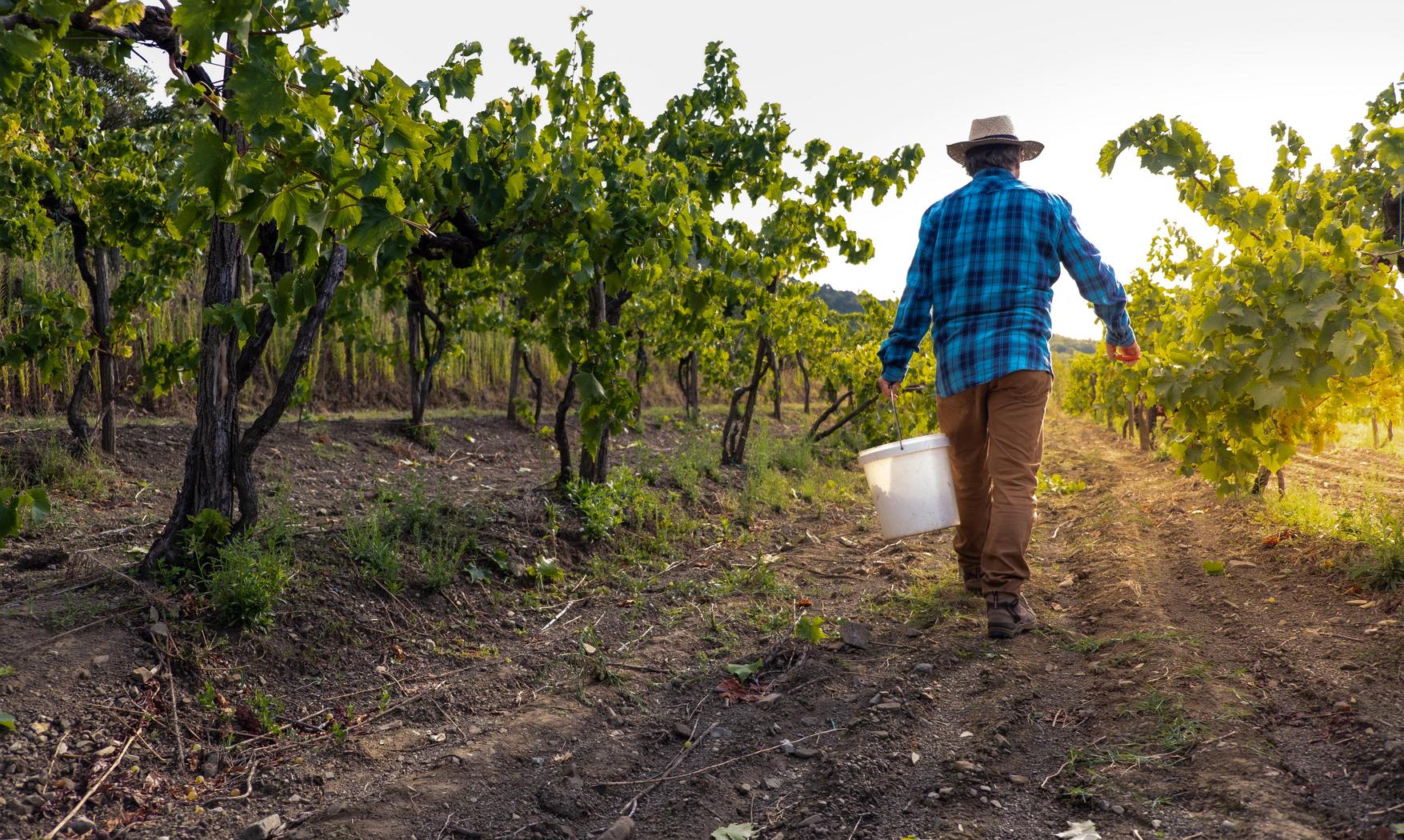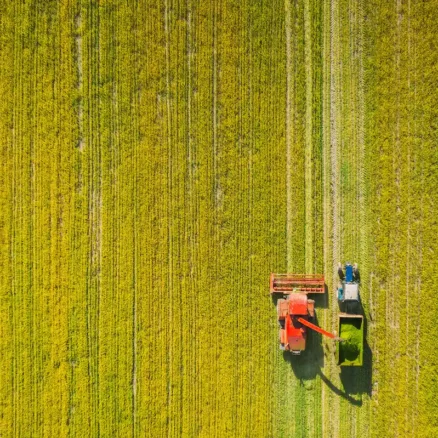In brief:
- Extractive, conventional agriculture is both a key driver of the environmental crisis and heavily reliant on natural resources and ecosystem services currently at risk.
- Regenerative agriculture is defined as a holistic and integrated approach to farming with demonstrated long-term positive outcomes across multiple social, environmental and financial indicators.
- Regenerative agriculture provides an opportunity to decarbonize and address environmental impacts and risks across multiple planetary boundaries, helping lay the foundation for resilience in a resource-constrained future.
- Companies supporting regenerative agriculture will need to perform context-specific assessments to build a strategy that not only addresses a diversity of environmental impacts, such as GHG emissions, water consumption, biodiversity loss, etc., but also prioritizes what is most material for each crop and region.
- To implement successful regenerative agriculture strategies, companies will need to keep growers at the center of their strategies.
As one of the largest contributors to climate change, the biggest user of water worldwide and the main source of global ecosystem degradation and biodiversity loss, agriculture is a key driver of the environmental crisis.
Unfortunately, it’s also the industry with the most to lose because of it.
Companies with agriculture and land use in their value chains are already feeling the effects of a changing climate.Record temperatures, extreme storms, wildfire, flooding and other events are altering land productivity and crop availability as well as making farm work — an already risky job — even more dangerous for workers.
But climate isn’t the only environmental threat to our agricultural systems. Factors such as soil health, water usage and pollution must be taken into account.
Many companies have already set climate targets and strategies, but to minimize exposure to nature-related risks and safeguard their businesses and workforces in the face of an uncertain future, they must expand their commitment and take holistic action.
Regenerative agriculture is the holistic and integrated approachto farming that companies need to address multiple environmental and social risks and tackle challenges in the supply chain while minimizing trade-offs.
Defining regenerative agriculture
Originally coined in the 1980s by Robert Rodale, the term regenerative agriculture has put a name to long-standing traditions of agriculture based on the multigenerational knowledge and experience of indigenous peoples, communities of color and growers around the globe.
There’s a general lack of consensus across the food and agriculture industry on how to define the term regenerative agriculture. This is, in large part, due to the fact that regenerative agriculture isn’t a fixed concept; it continues to evolve as old farming techniques meet modern innovation, providing a multitude of possibilities that enable farmers and businesses to adjust to the technical and economic realities of their farms and/or supply chains.
In general, definitions of regenerative agriculture are based on practices (e.g., no/low till, cover crops, compost), principles (e.g., limit soil disturbance, maintain soil coverage, maintain living roots, increase plant diversity, and integrate livestock), and outcomes (e.g., soil health, water quality, biodiversity). It’s worth noting that pioneers in this space often view regenerative agriculture not just as a collection of practices or principles, but as a transformative mindset that highlights a holistic, sustainable approach to farming.
While regenerative agriculture principles are useful for guiding strategies developed with growers, companies should adopt a definition of regenerative agriculture that emphasizes a holistic approach to farming with positive outcomes across multiple social and environmental indicators. Considering multiple indicators within the boundaries of our ecosystem will enable regenerativeagriculture to be an essential approach to restoring planetary health and reversing the adverse impacts of extractive, conventional agriculture.
An integrated approach to solve a complex problem
Agriculture’s contribution to climate change is by now widely recognized (the IPCC estimates that23% of total anthropogenic GHG emissions derive from agriculture, forestry and other land use), and a growing body of evidence outlining the risks climate change poses to productivity has spurred food and agriculture companies into action. Reducing emissions is a step in the right direction (and a necessary one), but a mistake companies make in their efforts to tackle climate change is focusing solely on carbon. As a result, other important environmental impacts and nature-related risks are overlooked.
The impacts of conventional food and land systems go well beyond climate. Extractive, conventional agricultural production has played a major part in the transgression of at least four otherplanetary boundaries: land system change,freshwater use (green water), biogeochemical flows and biosphere integrity.
Agriculture is a primary driver of the transgression of several planetary boundaries, as it is…
- The source of 37% of methane emissions, a gas that, though short-lived, traps significantly more heat than CO2 in the atmosphere and has been found to bemore damaging in the short-term
- Responsible for almost 90% of global deforestation between 2000 and 2018 with crop land expansion is responsible for 50% and livestock grazing is responsible for over 38%
- The main driver (70%) of water consumption, with a quarter of agriculture production in areas of high water stress
- The leading cause of waterway pollution due to phosphorus and nitrogen use
- A significant driver of biodiversity loss due to changes in land and sea use, deforestation, direct exploitation of organisms, climate change, pollution and invasive species
- Threatening 24,000 of the 28,000 (or 86%) species at risk of extinction
This spells trouble for food and agriculture companies. Earth’s systems are intricately linked through feedback loops; what affects one can affect another.Land degradation, biodiversity loss and changes to the water cycle, for example, aggravate, and are reinforced by, climate change. Failing to act beyond carbon not only compromises a company’s ability to effectively address climate change, it also increases their exposure to physical and transitional risks. Already, food and land use systems generate an estimated$12 trillion in hidden environmental, health and socio-economic costs each year — a number that far surpasses the value of the system’s global output.
Food and agriculture companies must look at the big picture to effectively reduce impacts, mitigate nature-related risks, and adapt to a changing world. Taking an integrated approach, regenerative agriculture offers an avenue to address environmental impacts and risks across multiple planetary boundaries and build resilience in a resource-constrained future. For example, implementing the principle of diversification has been found to “[enhance] biodiversity, pollination, pest control, nutrient cycling, soil fertility, and water regulation without compromising yields.”
Taking a multi-issue approach may seem resource and time intensive, but early assessments to determine which topics are most material for a given system (i.e., water in drought-prone regions or land-use change in heavily deforested regions) and leveraging existing resources to gain insights can enable strategic short-term prioritization between indicators. Looking beyond carbon will ensure companies are directing resources toward protecting and restoring the most critical natural resources for each part of their supply chain.
Keeping those most vulnerable at the center of your strategy
Taking a top-down approach to implement regenerative agriculture can stifle uptake and misdirect resources. Growers and rural communities should be at the center of a company’s regenerative agriculture strategy.
Growers are naturally concerned about the risks of short-term losses and increased financial insecurity during the transition from conventional operations to a regenerative approach. Companies have a compelling opportunity to support farmers financially to help mitigate or share the burden of that risk. Further they should heed farmers’ invaluable knowledge of their own lands, as both the land and the knowledge is often passed down through the generations. Co-developed strategies built at the farm level will establish long-term partnerships across the value chain to mitigate or distribute these risks to successfully transform a farm system from the bottom up.
Companies will need to explore innovative partnership agreements that challenge short-term contracts and untraceable supply chains to not only support the transition but provide growers with the confidence to continue exploring and identifying what’s best for their farm and regenerating natural resources. In addition to financial support, education and local examples are required for growers to feel comfortable transitioning to regenerative agriculture. Companies have the chance to increase grower uptake by facilitating farmer-to-farmer mentorship and harnessing both science and indigenous and local knowledge to develop guidance and training.
Companies should also dig deeper to identify the most vulnerable and marginalized communities within their supply chains (e.g., rural communities living in unsafe climates where the mean annual temperature is outside of the ~11-15°C environmental niche for humans, small shareholder farmers, farmworkers, and those who are historically racially-marginalized). A recent publication built on the planetary boundaries framework to understand the safe and just boundaries for our Earth system found that even stricter boundaries are necessary to minimize significant harm to humans, considering current and future generations across different countries and communities.
Though it will take time to transition supply chains to be inclusive and environmentally sustainable, due to the behavioral and cultural changes it will require, doing so is essential to the long-term success of the food and agriculture industry and the communities that support it.
Financing the transition: a solid business case + logistical imperative
Of course, money is needed to transition conventional farms to regenerative practices, and the initial costs needed to convert farms can be a hurdle for growers, many of whom are already face financial challenges. To ensure the widespread adoption of regenerative agriculture, businesses have a critical role to play in financing the transition. And the business case is there: according to a recent BCG analysis, businesses that apply regenerative agriculture could realize “between 70% and 120% higher profitability and a return on investment of 15% to 25% over 10 years.”*
What’s more, once regenerative agriculture is established, it requires fewer costly interventions to sustain. For example, its positive effects on biodiversity is instrumental in pest control and pollination, increasing yields and decreasing expenditures on pesticides. Activities such cover-cropping and rotation can restore soil health, requiring less amendment and fertilization.
Cover crops can also help optimize water usage by reducing soil temperature leading to less evaporation. Further, healthier, mulched soil retains more water. Regenerative practices can help insulate growers from rising water costs, particularly in areas suffering from water scarcity through drought and groundwater loss.
What’s more, customers are becoming increasingly aware of the environmental impact of their purchases. Numerous studies have found that customers want more sustainable products and companies that provide them — and who can accurately and clearly articulate their environmental merits — stand to benefit greatly.
Aligning business with regenerative agriculture
1. Build and evolve your strategy from a strong baseline
Start by identifying key hotspots by conducting a greenhouse gas inventory, as well as nature impact and risk assessments. With this information, companies should then begin to engage value chain partners to collect supply-specific data, prioritizing commodities with the greatest overall impact. Multi-indicator farm-level assessments provide an opportunity to engage with suppliers on the challenges and opportunities specific to their farming systems, climate, and region to reduce impacts as well as understand what they already measure to inform their own farm operations. As companies track progress year-over-year, they should continue to evolve their baseline, further optimizing the indicators measured and tracked based on materiality for the crop or region, such as water impacts.
2. Set goals for value chain improvements
In parallel to improving a baseline understanding of sources of impact, companies should define targets to reduce impacts and continue to evolve those targets alongside their footprint. The Science Based Target initiative’s (SBTi) Forest, Land and Agriculture Guidance supports companies in defining climate goals when their value chains rely heavily on agriculture. Similarly, the Science Based Targets for Nature (SBTN) is the standard for measuring corporate action in relation to the planetary boundaries beyond carbon. As a company campaigns these targets across the value chain, this will unlock an additional opportunity to understand what risks and obstacles are preventing supply chain partners from achieving these goals and what resources need to be available to mitigate risks.
3. Transform your value chain to facilitate the adoption of regenerative agriculture
Through efforts to measure impact and set targets, companies have an opportunity to establish the necessary communication channels they need to co-develop a strategy with its value chain partners. Setting goals isn’t enough to realize sustainable transformation. Companies must invest in context-specific intervention strategies in key sourcing areas.
Approaching growers, suppliers and other stakeholders along the value chain as critical partners in transformation will enable more productive engagement that is more likely to lead to successful outcomes. Companies may tactically require building out their business operations to enable this level of supply chain engagement. This would include investments in research and developing multidisciplinary expert working groups that include scientists, growers, and members of impacted communities in order to re-evaluate business models to account for the cost of transition. Companies should also build credible marketing campaigns to generate demand for a more sustainable product.
A win for people, planet and business
When thoughtfully applied, regenerative agriculture can benefit all aspects of the “triple bottom line.” Whether you think of it as a practice — or a mindset — it has tremendous potential to not only address multiple environmental challenges in how our agricultural systems interact with nature, but it can also fortify supply chain resilience, serve as an effective social sustainability practice, reduce long-term costs, and provide a critical competitive advantage.
*Note: Results may vary across crops and regions.



